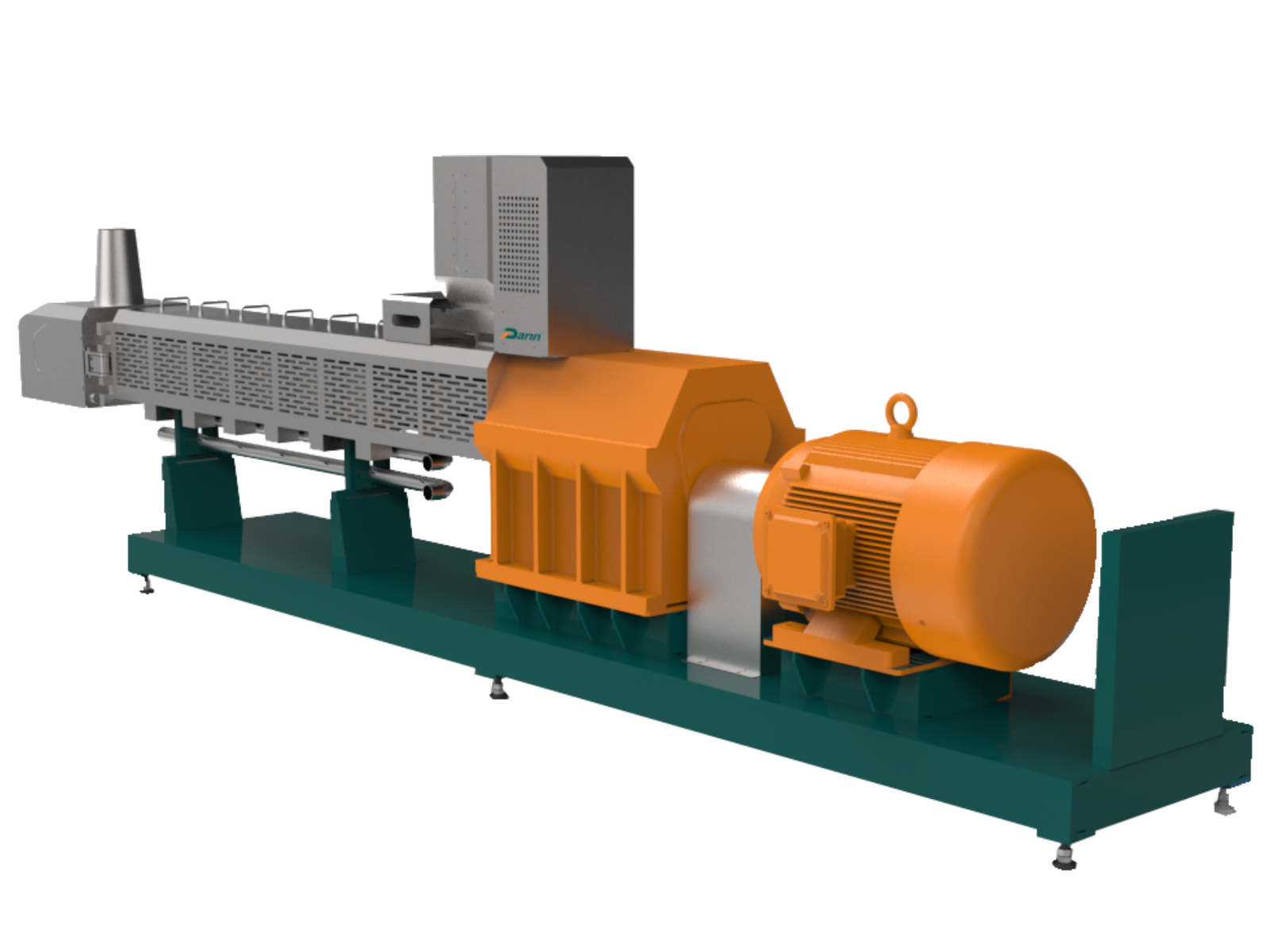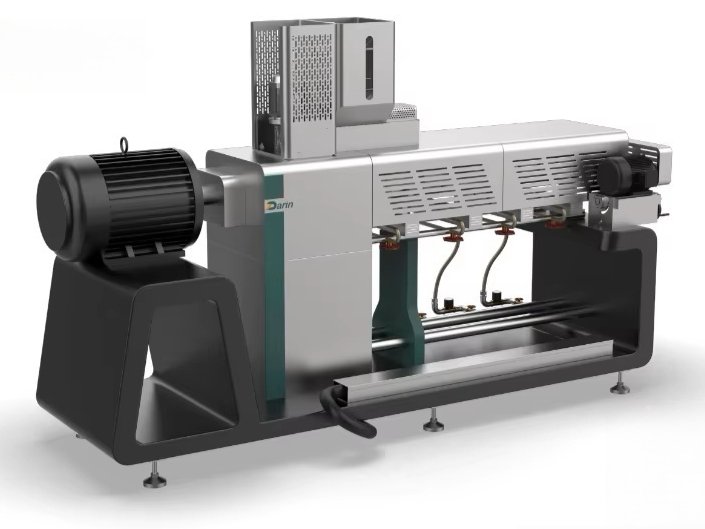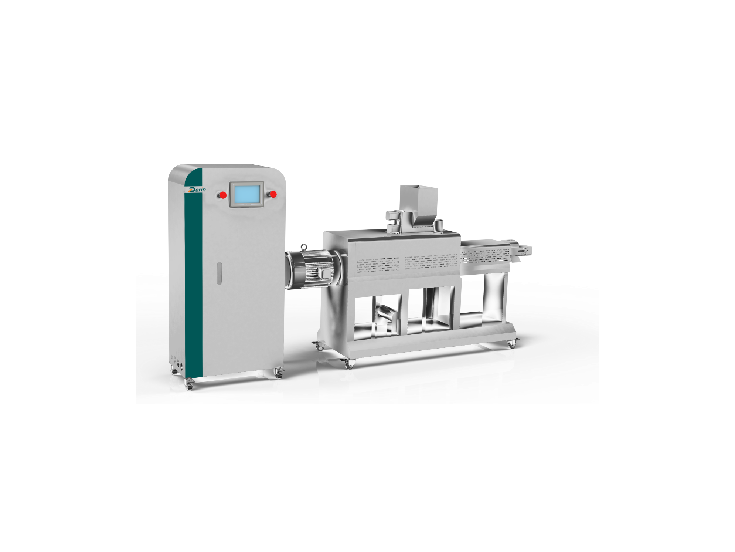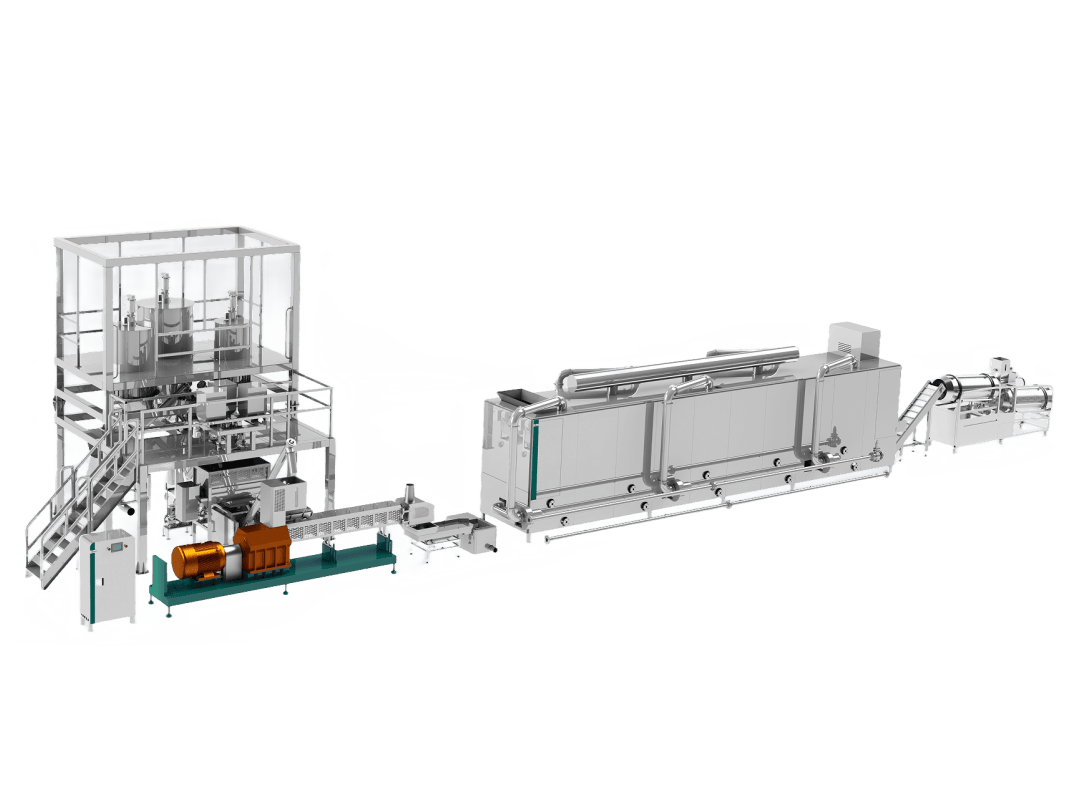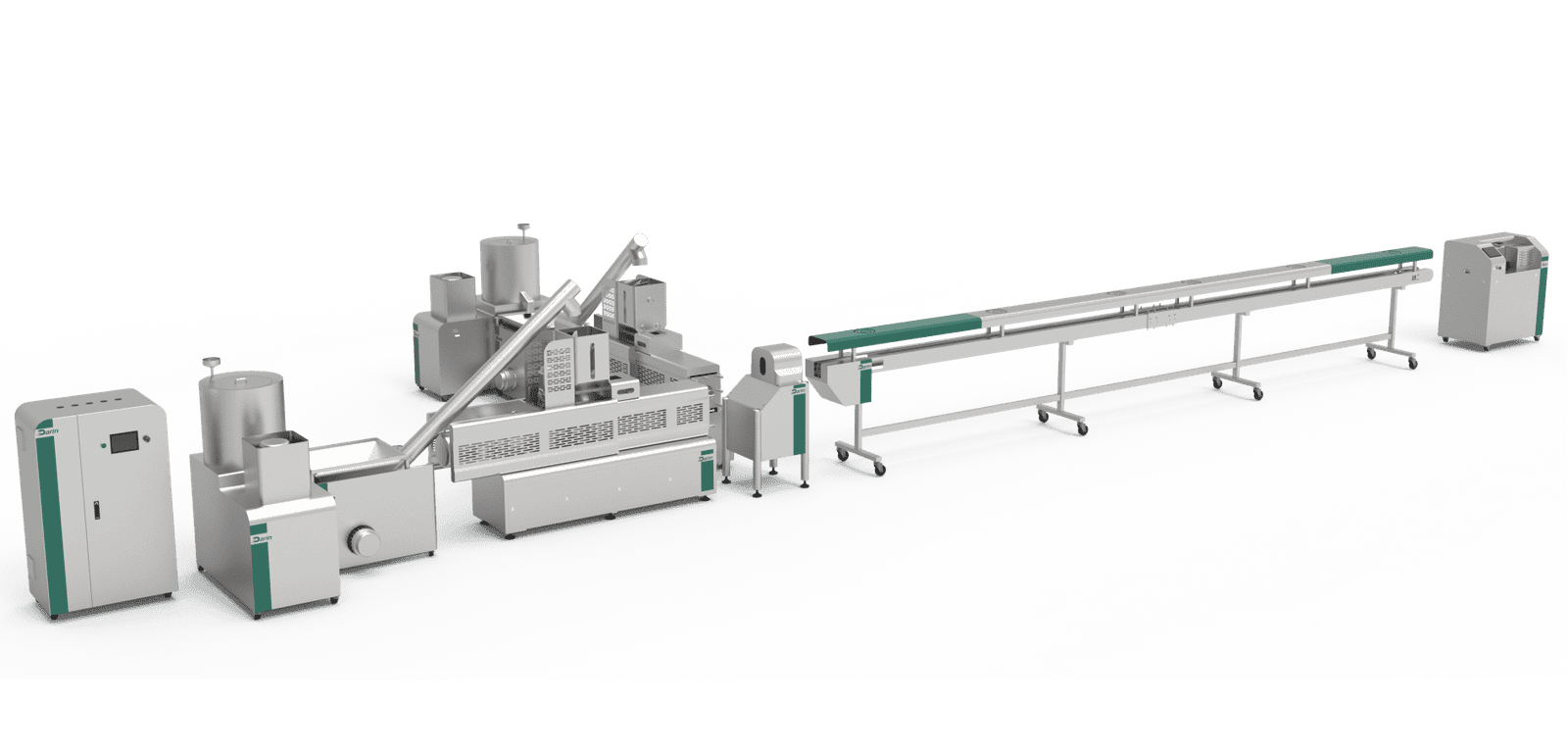
Stepping into the pet food manufacturing world? Let's make sure you're equipped for success.
The best pet food processing equipment options include mixers, grinders, extruders, and automated packaging systems. These machines help manufacturers improve efficiency, maintain high quality, and meet regulatory standards across various types of pet food production.
I remember the first time I walked into a bustling pet food factory. The air buzzed with the hum of machinery and the faint aroma of kibble. It was fascinating yet overwhelming. Choosing the right equipment can feel daunting, but understanding each machine's role can simplify things. From mixers that blend ingredients perfectly to extruders that shape them just right, every piece plays a crucial part in the production line. Let's dive into how these machines can revolutionize your operations, keeping you ahead in the competitive pet food market.
Mixers are essential in pet food production.True
Mixers blend ingredients to ensure consistency in pet food.
Extruders are only used for dry pet food.False
Extruders can be used for both dry and wet pet food products.
How Do Mixers Enhance Pet Food Production?
Ever wondered how that kibble in your pet's bowl stays so consistent and nutritious? Let me take you behind the scenes of pet food production and uncover the magic of mixers!
Mixers enhance pet food production by uniformly blending ingredients, which ensures consistent texture and nutritional content. This uniformity is crucial for meeting quality standards and consumer expectations.
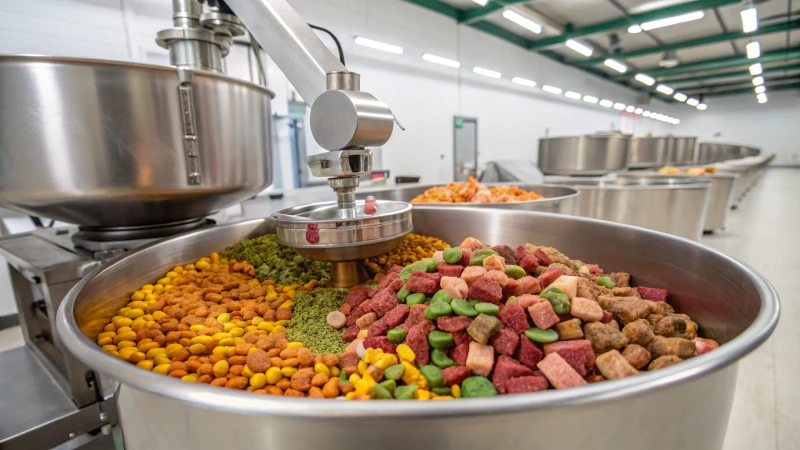
The Role of Mixers in Achieving Uniformity
When I first delved into the world of pet food production, I was amazed at how mixers could transform a mishmash of raw ingredients into a perfectly blended masterpiece. Imagine baking a cake—if the flour and sugar aren’t mixed properly, you end up with uneven pockets of taste and texture. Similarly, mixers ensure that every batch of pet food maintains the same nutritional profile, crucial for our furry friends' health.
- Ingredient Integration: I remember my first encounter with industrial mixers capable of handling anything from fine powders to chunky meats and vegetables. Watching them in action was like seeing a symphony of flavors and textures coming together, each component harmoniously incorporated to deliver consistent nutrition.
- Quality Control: One challenge I faced early on was achieving consistency across multiple production batches. With mixers, this hurdle was significantly lowered as they reduced variations, ensuring each batch met the stringent quality standards expected in our industry.
Enhancing Texture and Palatability
It's not just about mixing ingredients; it's also about creating that perfect crunch or tender bite that pets adore. My cat, for instance, is quite the connoisseur—preferring her treats with just the right amount of crunch.
- Texture Creation: By tweaking the mixing process, I can cater to these preferences, whether it's through twin-screw extruders1 for crunchy kibble or other techniques for softer meals.
- Palatability Factors: Distributing flavors evenly is an art form in itself. It ensures that every bite is just as delicious as the last, keeping pets coming back for more.
Ensuring Nutritional Value
One of my core missions is to preserve the integrity of every ingredient we use. Mixers play a pivotal role here by safeguarding sensitive nutrients during processing.
- Nutrient Preservation: It's essential to protect vitamins and minerals from degradation, ensuring each serving delivers the intended benefits.
- Nutrient Distribution: Even distribution is key; without it, some servings might lack vital nutrients, affecting a pet's health over time.
Technological Advancements in Mixers
As technology advances, so do our mixers. The precision and efficiency improvements I've witnessed are nothing short of revolutionary.
| Feature | Benefit |
|---|---|
| Precision Mixing | Ensures consistent product quality |
| Energy Efficiency | Reduces operational costs |
| Automation | Minimizes human error and increases throughput |
These innovations not only help us keep up with rising demands but also maintain our commitment to quality. With real-time monitoring and automated adjustments, modern mixers offer a level of precision I once only dreamed of. For more on advanced mixer technology2, further research is recommended.
Mixers ensure uniformity in pet food production.True
Mixers blend ingredients consistently, maintaining a uniform nutritional profile.
Mixers do not affect the texture of pet food.False
Mixers adjust blending to create different textures, like crunchy or soft.
How Do Grinders Impact Pet Food Processing?
Grinders in pet food processing are like the unsung heroes, making sure our furry friends enjoy their meals with the right texture and nutritional balance.
Grinders in pet food processing break down raw materials into consistent sizes, enhancing digestibility and ensuring product uniformity. They improve the texture and nutritional quality of pet food, making it more palatable.

The Mechanics of Grinders in Pet Food Production
Let me take you back to the time I first discovered the magic behind pet food processing. Picture this: a bustling factory filled with the hum of machinery, and at the heart of it all, the grinders. These machines are crucial in transforming raw ingredients into a homogenous blend, breaking down meat, grains, and other components into smaller particles. This meticulous process ensures that every bite of pet food is nutritionally balanced3.
Ensuring Uniformity and Consistency
I remember a day spent observing how uniform particle size could make all the difference. Imagine trying to bake a cake with unevenly chopped ingredients—disastrous, right? Grinders help achieve that perfect consistency by processing ingredients into similar sizes, aiding in even nutrient distribution. This uniformity not only enhances the appearance but also improves the palatability of the final product.
Enhancing Digestibility and Nutritional Uptake
Breaking down food into smaller particles is like giving pets a head start in digestion. It increases surface area, allowing enzymes to work more effectively, boosting nutrient absorption so our pets can receive the full benefits of their meals. Understanding how grinders optimize digestibility has given me valuable insights into pet nutrition strategies4.
Versatility in Ingredient Handling
Modern grinders are like versatile chefs, capable of handling everything from soft meats to tougher grains. This versatility means that manufacturers can create diverse pet food formulations, catering to specific dietary needs. The ability to manage different textures also plays a pivotal role in product innovation.
Comparing Grinder Technologies
In my quest for efficiency and quality, I've delved into different grinder technologies commonly used in the industry:
| Grinder Type | Ideal For | Key Feature |
|---|---|---|
| Hammer Mill | Soft Ingredients | High-speed impact |
| Roller Grinder | Grains | Consistent crush |
| Disc Grinder | Diverse Textures | Adjustable settings |
By analyzing these technologies, manufacturers can select the most appropriate equipment to enhance their production processes. I found that learning more about grinder advancements5 could truly transform pet food manufacturing.
Grinders ensure uniform particle size in pet food.True
Grinders break down ingredients into consistent sizes for uniformity.
Hammer mills are ideal for tough grains in pet food.False
Hammer mills are best for soft ingredients, not tough grains.
Why Are Extruders Essential for Pet Food Manufacturers?
Ever wondered why pet food manufacturers rely so heavily on extruders? It's all about consistency, nutrition, and efficiency.
Extruders are essential for pet food manufacturers as they streamline production, ensure uniformity in product texture, and enhance nutritional profiles. By employing precise cooking methods, extruders also improve digestibility, crucial for pet health.
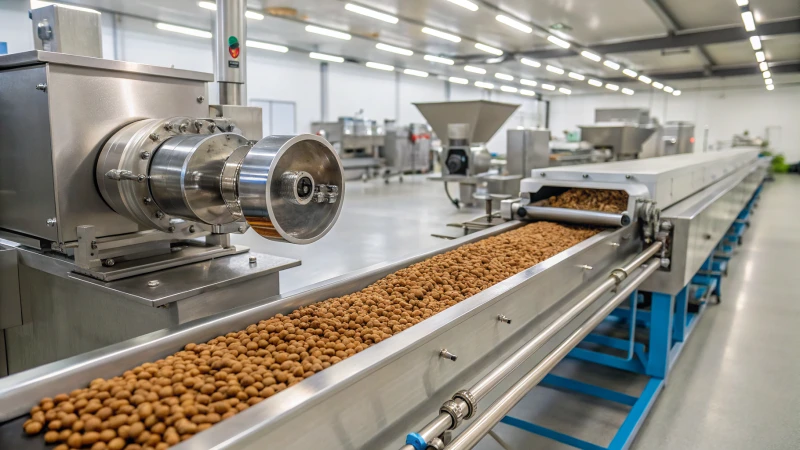
Enhancing Nutritional Profiles
When I first learned about extruders' role in pet food production, it felt like a revelation. These machines are pivotal in enhancing the nutritional content of pet food. I remember visiting a factory where the precise cooking methods ensured nutrients were preserved, minimizing undesirable elements. This isn't just about meeting industry standards—it's about genuinely caring for our pets’ health. Nutritional enhancements6 through extrusion can include fortifying foods with vitamins, minerals, and proteins, making every meal a boost for our furry friends.
Ensuring Product Consistency
I vividly recall a conversation with a pet food manufacturer who likened consistency to trust. "With every bag of kibble," he said, "you're promising pet owners that what's inside will meet their expectations." Extruders deliver on this promise by ensuring uniform size, shape, and moisture content across batches. This uniformity is essential not just for dry kibble but also for semi-moist snacks and other treats.
| Benefits | Details |
|---|---|
| Uniformity | Ensures all products meet quality standards. |
| Texture Control | Allows precise adjustments to meet specific pet needs. |
| Moisture Management | Controls moisture levels to extend shelf life and preserve freshness. |
It's fascinating to watch how these machines meticulously control texture and moisture levels, extending shelf life and maintaining that fresh-from-the-factory feel.
Improving Production Efficiency
Efficiency in production is like the magic wand that turns innovation into reality. Extruders integrate mixing, cooking, and shaping into a single machine—reducing labor costs and energy consumption. I once saw how this efficiency helped a manufacturer meet rising demands without sacrificing quality. Modern extruders now feature automated systems that allow real-time monitoring and adjustments, optimizing performance in ways that were unimaginable just a decade ago.
Versatility in Product Development
One of my favorite things about extruders is their versatility. Whether it's creating kibble of various shapes and sizes or crafting specialty treats with unique flavors and textures, these machines are at the heart of innovation.
- Kibble Production: Allows for various shapes and sizes.
- Specialty Treats: Facilitates innovation in flavors and textures.
- Dietary Adjustments: Supports the incorporation of unique ingredients for specific health needs.
I recall a time when a small change in the extrusion process led to a new line of dental chews tailored for specific health needs—talk about making strides in product development! By utilizing extruders, manufacturers can swiftly adapt to market trends, ensuring their offerings remain competitive and appealing.
Meeting Global Standards
In an interconnected world, adhering to global standards isn't just a requirement; it's an opportunity. Extruders help manufacturers comply with international standards by ensuring consistent quality and safety across production lines. For those operating in over 90 countries, maintaining these standards is crucial for expansion.
By integrating advanced technologies7 aligned with certifications like CE and ISO, extruders enable us to produce high-quality pet food that meets stringent regulatory requirements.
These insights into the significance of extruders illustrate their essential role in modern pet food manufacturing. As technology continues to evolve, extruders will remain integral to innovation and efficiency in this dynamic industry.
Extruders enhance the nutritional profile of pet food.True
Extruders preserve nutrients and fortify vitamins, minerals, and proteins.
Extruders reduce the consistency of pet food products.False
Extruders improve texture and quality consistency across batches.
How Can Automation Improve Efficiency in Pet Food Manufacturing?
Imagine running a pet food factory where every kibble is perfect, and nothing goes to waste—thanks to automation!
Automation in pet food manufacturing boosts efficiency by streamlining processes, improving product consistency, and reducing human error. This leads to faster production times and lower costs, making operations more competitive.
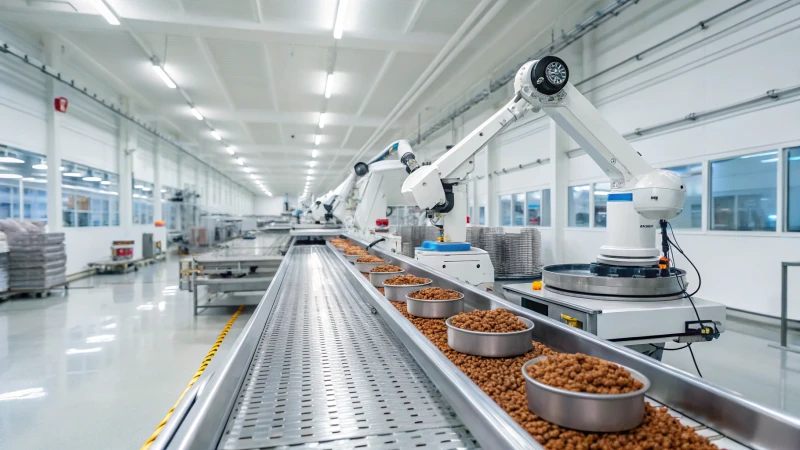
Enhancing Production Line Efficiency
When I first stepped into the world of pet food manufacturing, it was clear that juggling multiple processes—mixing, cooking, and packaging—was like trying to keep a dozen plates spinning in the air. Automation changed all that for me. It felt like magic to see everything integrated seamlessly. For instance, automated packaging solutions8 handle diverse packaging formats with ease, slashing time and labor costs. Gone are the days of endlessly supervising manual tasks, allowing me to focus on innovation instead.
| Process | Traditional Method | Automated Method |
|---|---|---|
| Mixing | Manual labor | Automated mixers |
| Cooking | Batch cooking | Continuous cookers |
| Packaging | Hand-filled | Auto-packing lines |
Improving Product Consistency
Consistency was always a challenge before automation. I remember the countless hours spent fretting over product variations that could tarnish my brand's reputation. With automated systems, I can rest easy knowing every batch meets the same high standards. Technologies like robotic arms9 have become my quality control champions, ensuring precision that humans alone could never match.
Reducing Human Error and Increasing Safety
In my experience, human error was an inevitable part of the manual processes, often leading to costly mistakes and safety concerns. Automation has been a game-changer in this regard. With built-in safety protocols, our automated systems minimize risks, and innovations like sensor-based monitoring10 catch issues before they spiral out of control.
Addressing Labor Shortages
The labor market can be unpredictable, and I’ve faced times when finding skilled workers felt like searching for a needle in a haystack. Automation bridged this gap perfectly. It allowed me to allocate my human resources to tasks that truly required creativity and problem-solving while letting machines handle the repetitive work. Automated sorting systems11 have been particularly effective, tirelessly working through massive volumes without needing a coffee break.
By embracing automation, I've not only enhanced efficiency but also fortified the quality and reliability of my operations. It's an investment that's paid off many times over, making my venture more competitive and agile in an ever-evolving market.
Automation reduces labor costs in pet food manufacturing.True
Automation handles tasks like mixing and packaging, reducing manual labor.
Manual methods are faster than automated systems in packaging.False
Automated packaging is faster and more efficient than manual methods.
Why are certifications crucial for pet food equipment?
Ever thought about what makes your pet's food equipment reliable and safe? It's all in the certifications.
Pet food equipment should ideally have certifications like CE, ISO 9001, and HACCP. These ensure the machinery meets safety and quality standards required in global markets. Compliance with these certifications can significantly enhance product credibility.
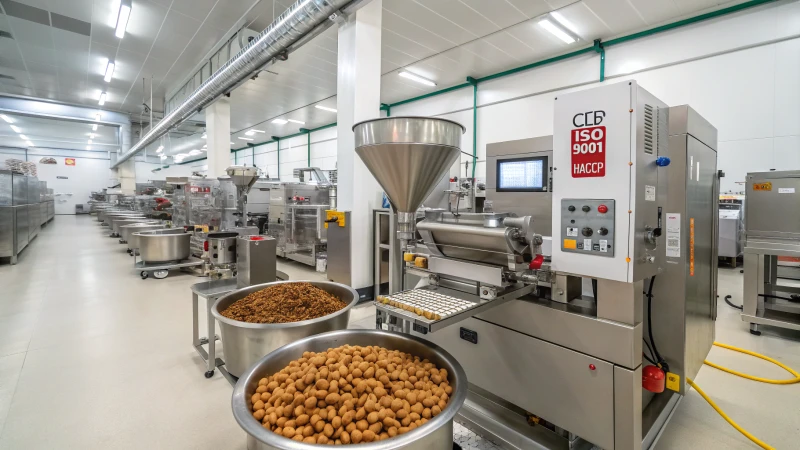
Understanding Key Certifications for Pet Food Equipment
When I first ventured into the pet food machinery12 business, it was a whirlwind of learning about various certifications. These certifications are not just fancy labels; they are the backbone of safety and quality assurance in our industry. Take the CE mark, for instance. It’s like a passport for products in the European Economic Area, ensuring they meet health, safety, and environmental protection standards.
ISO 9001: Quality Management Systems
I remember the first time we achieved ISO 9001 certification. It felt like a milestone—proof that our commitment to quality was recognized internationally. This certification isn't just about meeting standards; it's about consistently delivering products that satisfy customer needs and comply with regulatory requirements.
| Certification | Description |
|---|---|
| CE | Ensures compliance with EU standards for safety and environmental protection. |
| ISO 9001 | Focuses on meeting customer and regulatory quality requirements. |
| HACCP | Systematic preventive approach to food safety. |
HACCP: Hazard Analysis and Critical Control Points
Implementing HACCP was a game-changer for us. It's a proactive approach to food safety, helping us identify critical control points to prevent potential hazards before they occur. It's not just about ticking boxes—it's about ensuring every batch of pet food we produce is as safe as possible.
Importance of Global Certifications
Global certifications like CE and ISO 9001 have opened doors to international markets for us. I vividly recall our first expansion into Europe; the CE mark was our ticket in, assuring clients of our compliance with local regulations. These certifications are more than just formalities; they're trust builders, strengthening our reputation across borders.
Incorporating these standards has significantly impacted our global distribution strategies13. I still get a thrill when I see our machinery being used in far-flung places like Australia or emerging markets such as Mexico or Egypt. It’s like watching a dream unfold, knowing that we’re helping businesses worldwide provide safe, high-quality pet food.
CE mark is required for EU market entry.True
The CE mark ensures compliance with EU safety and environmental standards.
ISO 9001 focuses on food safety standards.False
ISO 9001 focuses on quality management systems, not specifically on food safety.
How Do Advanced Technologies Influence Pet Food Machinery?
Have you ever wondered how our furry friends' meals are crafted with such precision and care?
Advanced technologies like automation, IoT, and AI significantly enhance pet food machinery by improving efficiency, precision, and customization. These innovations enable manufacturers to produce high-quality, nutritionally balanced pet foods at scale, meeting diverse consumer demands.

Automation and Robotics
I remember the first time I walked into a pet food manufacturing plant; the hum of machines was mesmerizing. Automation has truly revolutionized the industry. It ensures that every kibble is mixed with just the right ingredients, akin to a master chef perfecting a recipe. With robotics, switching from producing one type of treat to another is a breeze, keeping up with the ever-changing demands of pet parents.
Internet of Things (IoT)
Think about it—real-time monitoring akin to having a fitness tracker for machinery. The IoT in pet food production ensures that conditions like temperature and humidity are just right, much like ensuring the perfect rise of a sourdough loaf. This tech also predicts when machines need a tune-up, preventing those dreaded downtimes that nobody wants.
| Feature | Benefit |
|---|---|
| Real-time Monitoring | Ensures optimal production conditions |
| Predictive Maintenance | Reduces downtime and extends lifespan |
Artificial Intelligence (AI)
AI is like having a culinary genius at your disposal, analyzing what pets love and what's best for them. By diving into data on preferences and nutritional needs, AI helps create pet food that’s not just healthy but tailor-made for specific dietary requirements.
Sustainability Trends
Sustainability in pet food is more than just a buzzword—it's a mission. With energy-efficient machinery, I'm excited about reducing carbon footprints. Imagine your pet's meal wrapped in packaging that doesn't end up clogging our oceans.
- Energy-Efficient Machinery: Cuts down on emissions and costs.
- Biodegradable Packaging: Protects our planet.
Customization Capabilities
The world of pet food has become as diverse as a gourmet restaurant menu. From kibble to elaborate treats, advanced machinery is the secret ingredient that allows us to innovate. It's like having a magic wand that can create any shape or texture imaginable. Learn more about extrusion technology14.
With the growing trend towards specialized diets—grain-free, allergen-free—you name it, these technologies empower us to keep pace with the latest trends and consumer needs.
Emerging Technologies
The future holds even more promise with innovations like 3D printing, making personalized pet meals a potential reality. Imagine crafting a meal that's just right for your beloved companion! Explore 3D printing potential15. As these technologies advance, they not only promise efficiency but also pave the way for new possibilities in how we cater to our pets' needs.
As I look ahead, the integration of these advanced technologies excites me—it’s like stepping into an era where the machinery isn't just about making food but enhancing the quality of life for our pets. This evolution is shaping a future where every bite is tailored with love and precision.
Automation reduces labor costs in pet food production.True
Automation streamlines operations, cutting down on manual labor expenses.
AI hinders the customization of pet food products.False
AI enhances customization by analyzing preferences for tailored products.
Conclusion
Explore essential pet food processing equipment like mixers, grinders, and extruders that enhance efficiency, quality, and compliance in manufacturing nutritious pet food products.
Twin-screw extruders provide detailed insights into achieving specific textures like crunchy kibble. ↩
Explore cutting-edge mixer technologies enhancing precision and efficiency in pet food manufacturing. ↩
Discover how uniform particle size improves nutritional balance and palatability in pet food. ↩
Explore how grinders enhance nutrient absorption by improving digestibility. ↩
Learn about cutting-edge grinder technologies revolutionizing pet food production. ↩
Discover how extrusion enhances the nutritional value of pet foods by retaining essential nutrients and improving digestibility. ↩
Learn about advanced extrusion technologies that help pet food manufacturers meet international quality standards. ↩
Discover how automated packaging reduces labor costs and speeds up the manufacturing process. ↩
Learn how robotic arms improve consistency and efficiency in food production. ↩
Explore how sensors enhance safety and accuracy in production lines. ↩
Find out how sorting systems address labor shortages by automating repetitive tasks. ↩
Learn how CE certification ensures that pet food equipment complies with essential safety and environmental standards. ↩
Explore why CE and ISO 9001 certifications are critical for accessing international markets. ↩
Explore how extrusion technology enhances product variety and appeal in pet food manufacturing. ↩
Discover the potential of 3D printing for personalized pet food solutions. ↩


